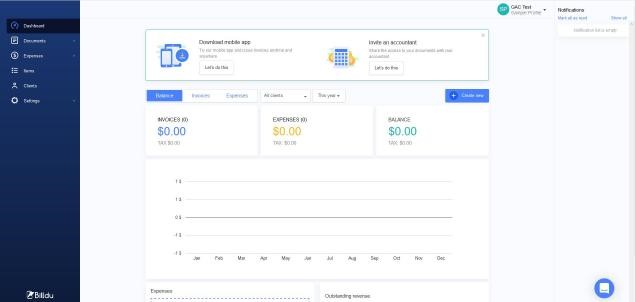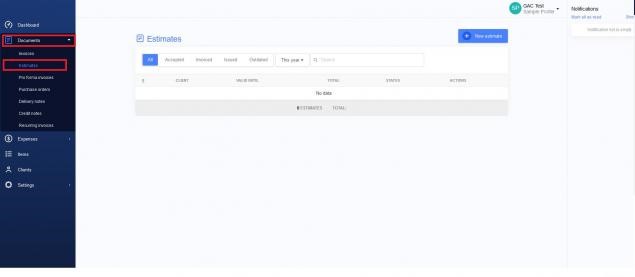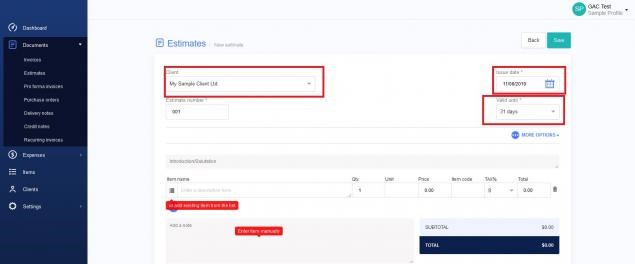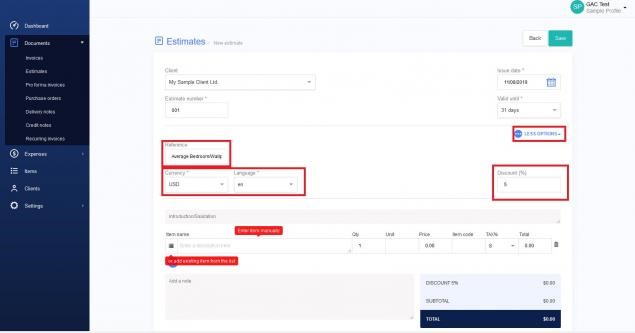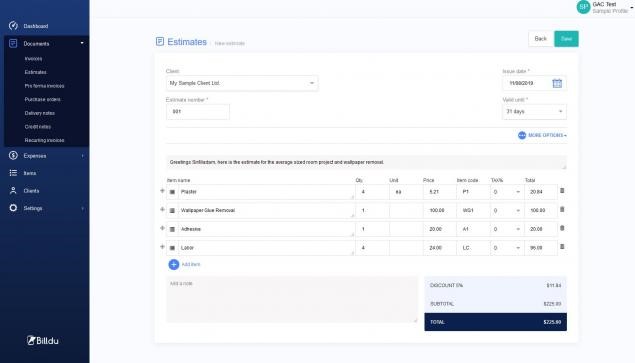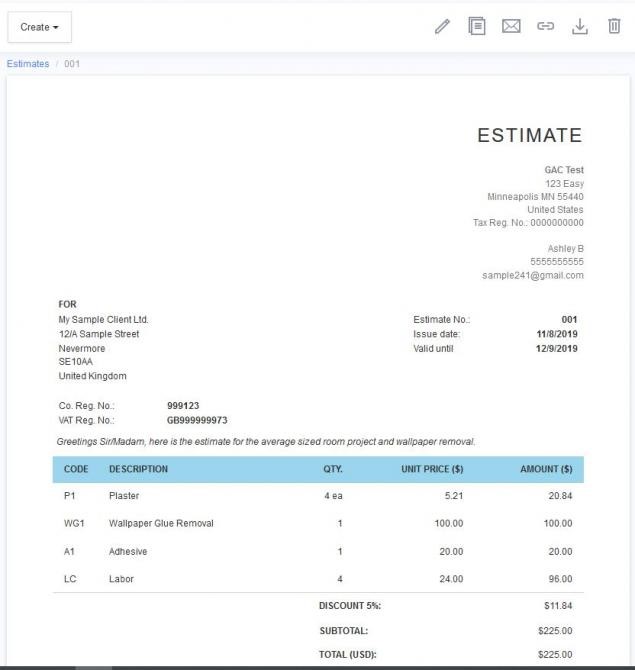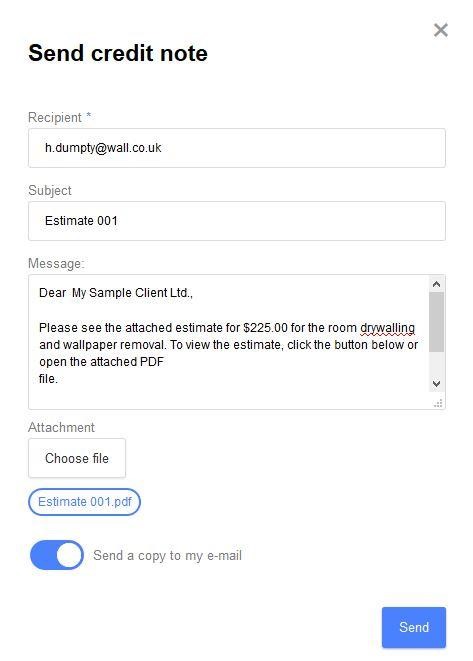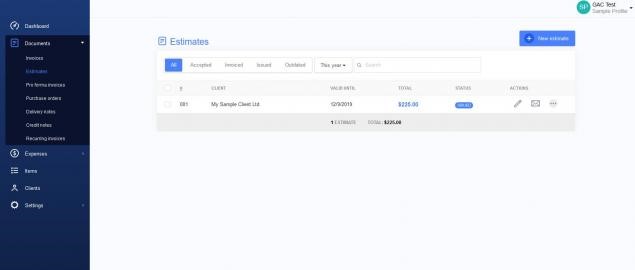Contractors and many self-employed people give job estimates to potential clients to detail their prices. This helps the client decide whether or not they can afford the workers’ rate for the project they have in mind. But what is an estimate, and how do you write one? We’ll outline all of this information for you and more below.
What is a Job Estimate?
Before you know what goes into an estimate, you have to know what it is. An estimate is an educated, rough guess of what a job may cost. You typically give estimates before you know all of the details involved in a specific project. An example would be during an initial call with a new prospective customer or during a quick site visit.
Job estimates are your first thoughts on the potential costs, and they can drastically change when you get complete information. Unexpected complications can come up during the work that are outside the scope of what the customer initially asked, and this can cause cost increases.
Key Piece of Information – An estimate is only an informal idea of cost based on minimal information. It’s a starting point that can rise or fall. Clients cannot use estimates as a legal price standpoint.
For example, let’s say a client asked you to plaster what they said was an average-sized bedroom. When the prospective client calls you, they don’t have the exact room measurements. They mention that the room has some older wallpaper you’d have to remove before you do anything else. You’d send an estimate that showed your starting costs, say $200 for the room and $50 for the wallpaper removal.
NEVER label your estimate a quote until you have all of the information you need because quotes are legally binding.
Is a Written Estimate a Quote?
No. A quote is an exact price you’ll charge for completing the job. It’s fixed, and you can’t change it once the customer accepts it. The only exception is if the customer changes the type or amount of work required or you find out the job is totally outside of the original scope you agreed on and wrote your quote for.
You’ll only issue your customer a quote after you complete a thorough onsite visit when you have confidence that you established precisely what the job entails.
Key Piece of Information – You present your quotes formally, and the quote represents a contract between the customer and your business. If a price dispute comes up, the customer has a legal standpoint.
In the previous example involving the estimate for the “average-sized” room, you’d take a visit to your customer’s home. You find that the bedroom is significantly larger than average, and the walls have layers of old wallpaper that will take longer to remove.
Your quote would consider this, and you’d send one that showed it would cost you $225 to plaster the room with $100 for extensive wallpaper removal. So, a quote is an exact price and legally binding, and an estimate is not.
Tip: To enhance your sales workflow, explore top quoting apps designed for small businesses.
Tips for Writing a Work Estimate
Price may play a significant role in winning a job estimate, but it’s not an automatic guarantee that the client will pick you. Customers will usually be happy to pay more for peace of mind or quality work. If it’s the first time you’re working with a customer, you have to convince them you’re the correct choice. This is where a professional job estimate comes in, and we’ll give you tips to write one.
Use a Professional Template
Your written estimate should have a professional template you use to impress your potential clients. It should be a direct reflection of the image you want to display. Take the time to customize your work estimate template to include your brand colors, logo, and industry accreditation logos in the header. These things will show potential clients you’re interested, serious, and the real deal.
Be Quick When You Issue an Estimate
Time is money, and you want to be quick when someone requests an estimate. Sending them online is usually the most professional and fastest way to get it done. Once you meet with the client, go back to the office and write out your estimate. You can send it to their inbox in mere minutes, and beat your competition.
Make it Extremely Clear
You don’t want any confusion at all with your estimate. Itemize everything required for the job. Price out and list each production step or part separately. This high level of transparency breeds trust and tips the hand more favorably in your direction. It’s also vital that your written estimate lays out your payment terms. Use simple wording to get your point across, and make sure to discuss it further when you first meet with the client to go over the estimate itself.
Put a Deposit Request on the Estimate
As a self-employed or small business owner, one of the smartest moves you can make is to ask your clients for a deposit upfront. This deposit can help pay for out of pocket job expenses, reduce your risk of having unpaid invoices, improve your cash flow, and help you start the job sooner. You can vary your deposit amount depending on the scope and size of the project.
Make Payment Easy
The nature of your written estimate gives you the chance to open the lines of communication regarding how your payments work before you even start a project. You don’t want to risk losing out on the project because you don’t have payment plans that suit your customer.
Show that you can be flexible and offer all or most modern ways people expect to pay. With Billdu, you can set up a broad range of payment options, and you can even accept payments right from the app or online.
Give More Reasons to Say Yes, and Fewer to Say No
No matter how competitive you may keep your pricing, there will always be one or two customers who aren’t ready to commit to your pricing scale. Being able to offer financing helps reduce the project cost’s sting because your customer gets monthly payment options. It also makes it easier for customers to commit to bigger projects. It’s a good idea to offer financing early in the project discussions, and many people choose to have it right on the written estimate.
How to Create a Professional Job Estimate with Billdu
Billdu offers the chance for people to create professional work estimates and track each one. This tracking capability helps small business owners monitor their cash flow, payment schedule, estimates, invoices, and more. We’ll give you a step-by-step guide on how to start with Billdu and how to write an estimate next.
Step One – Create an Account
The first step you take is to go to Billdu.com and click on the “Registration” button on the top of the screen. Clicking this button will open a new tab where you fill in your information and create your account.
Step Two – Fill in Your Information
A new tab will open and ask you to fill in your business name, email, and password. Fill in those fields and click on the “Create Account” button.
Step Three – Explore Your Dashboard
Billdu will send you a link to validate your chosen email. Go to your email, find the link, click where it tells you to, and it’ll bring you back to your dashboard. Once you get here, take a little time and explore it to see what options you have available to you.
Step Four – Find Your Estimate Area
The way Billdu’s dashboard works is that there are menus on the left side of your screen that you can click. When you click the menus that have a little arrow by them, they open and cascade downward. To get to the job estimate area of your dash, click on “Documents” first, and then click on the “Estimates” button.
This part of your dash will show you your accepted, invoiced, issued, and outdated estimates. You can also filter by date or search for individual estimates.
Step Five – Open Your New Estimate – Fill in Client Information
If you look on the right, you’ll see a blue square with a + sign and “New estimate.” Click this box to open your new estimate template. The first thing you’ll do is fill in the top half of the estimate with your client’s information. Put in the client name, issue date, and how many days the estimate is valid for.
Step Six – Fill in Your Payment Information
The next step is to click the “More Options” menu on the right side of the dashboard right below the “valid until” box. This section is where you input a reference for the estimate, currency you want to use, preferred language, and a discount if you’re going to apply one.
Step Seven – Fill In Your Estimate Items One By One
The only thing left to fill in at this point is your salutation or introduction, estimate items, quantity, unit, price, item code, and the tax number. Billdu will automatically total everything as you go along to give you a final price. You want to have every service and product clearly listed here to keep your transparency levels high with your potential customers. When you finish, click “save.”
Step Eight – Carefully Review Your Estimate
Billdu will automatically populate your estimate on a neat, clean, and professional template. It’s critical that you take the time to carefully go over it to ensure everything is in, accounted for, and correct. Along the top of the written estimate, you’ll have buttons you can click to edit, duplicate, send, copy an online link, download as a PDF, or discard it.
Step Nine – Send Your Estimate to Your Customer
The sooner your estimate goes out to your customer, the better. You can send your estimate straight from Billdu to your customer by clicking the send link. When you click it, you’ll have to fill in your customer’s email, subject, and message. Billdu will automatically attach the estimate to your email, and you can request a duplicate copy to go to your email.
Step Ten – Keep Track of Your Written Estimates
If you click on your “Estimates” dashboard, it’ll keep a running tally of all of the invoices you have. The one you just made and sent will update to “Issued.” If your client accepts your estimate and gives you the job, you can update the invoice accordingly. You can also send them a finalized quote with all of the relevant information on it.
Step Eleven – Track Each Change You Make to the Estimate
Billdu has this really neat feature where it automatically keeps track of every action you perform with your job estimates. If you click and open your estimate back up, scroll to the bottom. You’ll see a timeline for that specific estimate. It’ll date and time stamp everything you do, and it’ll keep a running list.
Who Choose Billdu for Your Written Estimate Software?
Billdu gives you the chance to take control of your business’s finances. Since it’s so essential that you know how to track and monitor incoming and outgoing cash efficiently, you want all of the tools in one place.
Billdu’s dashboard gives you this centralized location. The dashboard lets you click to see your balance, expenses, and invoices. You’ll get a chart that enables you to see how your business does from month to month and spot patterns, and you can see your outstanding revenue and expenses. In turn, you’ll be able to plan for your business’s future.


